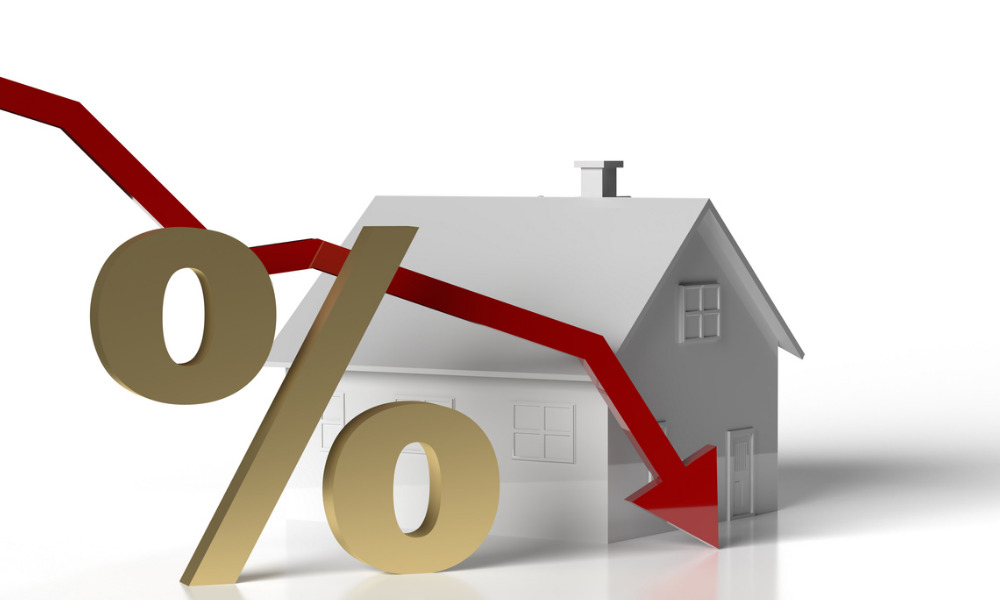Lenders ease stress tests while product availability climbs

Mortgage rates have continued to decline, while product availability has grown and lenders have eased stress testing requirements, price comparison site Moneyfacts has reported.
The average two-year fixed mortgage rate fell by 0.03 percentage points to 5.09%, while the average five-year rate dropped by 0.01 points to 5.08%, according to the latest Moneyfacts UK Mortgage Trends Treasury Report.
Both rates remain significantly lower than they were a year ago, reflecting a broader easing in borrowing costs since mid-2024. The average two-year fixed rate has declined by 0.86 percentage points since July 2024, when it stood at 5.95%. The five-year equivalent has fallen by 0.45 percentage points over the same period. The gap between the two terms has narrowed to just 0.01 points — the smallest difference since October 2022, when shorter-term rates began outpacing longer ones.
 “Fixed mortgage rates have continued on their downward trend, which will delight the millions of borrowers due to refinance this year,” said Rachel Springall (pictured right), finance expert at Moneyfacts. “Lenders have also been relaxing their stress test rules, which will further boost affordability.”
“Fixed mortgage rates have continued on their downward trend, which will delight the millions of borrowers due to refinance this year,” said Rachel Springall (pictured right), finance expert at Moneyfacts. “Lenders have also been relaxing their stress test rules, which will further boost affordability.”
The overall Moneyfacts Average Mortgage Rate dropped slightly to 5.11% in July 2025, down from 5.12% in June and a notable decline from 5.80% a year earlier.
Mortgage product shelf life decreased to 16 days, the shortest since March 2025, down from 17 days the previous month. Meanwhile, the number of residential mortgage products rose to 6,908 — the highest level since May 2025 and close to pre-financial crisis levels seen in October 2007.
Springall noted that despite signs of a slowdown in the pace of rate cuts, “there are expectations for fixed rate cuts to heat up this summer across the spectrum, fuelled by swap rate volatility.”
The average two-year tracker rate held steady at 4.91%, while the average revert-to or Standard Variable Rate (SVR) decreased to 7.42%. The SVR peaked at 8.19% in late 2023.
Loan-to-value (LTV) segments also reflected easing pricing trends. At 60% LTV, the average two-year fixed rate in July stood at 4.57%, down from 6.15% in July 2023. At 95% LTV, the two-year fixed rate averaged 5.54%, down from 6.80% over the same period.
Product availability improved across most LTV tiers, with notable year-on-year increases. The 95% LTV bracket offered 447 products, up from 361 in July 2024, while 90% and 60% LTV categories saw similar growth.
Springall pointed to the contrast between the current market and the volatility seen two years earlier. “This stance is far beyond the upheaval endured by the mortgage market two years ago,” she said. “Borrowers will not want to see a repeat of such upheaval, especially first-time buyers.”
She added that while lender flexibility is improving affordability, challenges remain. “There needs to be more progress to support first-time buyers, who remain the lifeblood of the mortgage market,” she said, calling for further reforms to loan-to-income rules and stronger support for “mortgage prisoners.”
The UK government is expected to announce a replacement for the Mortgage Guarantee Scheme later this month. Despite its expiry, Moneyfacts data shows that high-LTV mortgage availability remains relatively unaffected for now.
Want to be regularly updated with mortgage news and features? Get exclusive interviews, breaking news, and industry events in your inbox – subscribe to our FREE daily newsletter. You can also follow us on Facebook, X (formerly Twitter), and LinkedIn.



